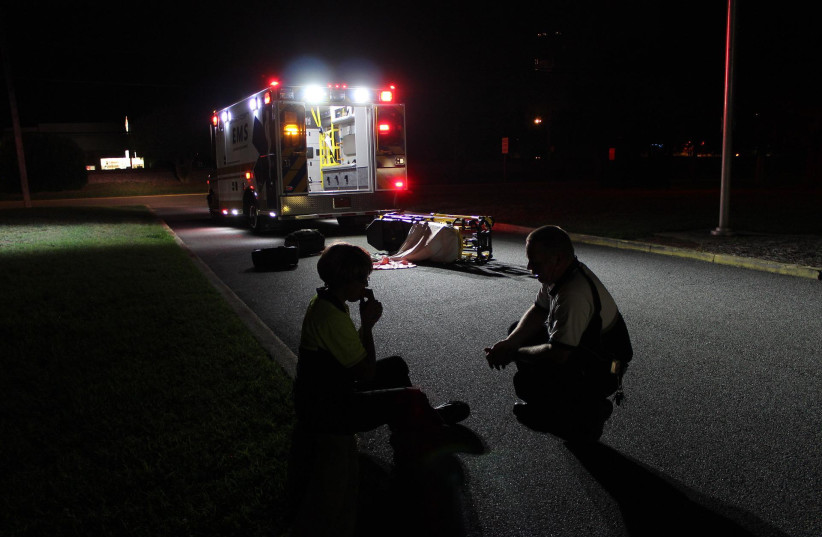A study at the University of Texas Health Science Center at San Antonio showed clinically significant reductions in PTSD symptoms in more than 60% of patients and long-term remission of the diagnosis in more than half just three weeks of outpatient “prolonged exposure” (PE) therapy.
PE therapy includes patients’ repeated retelling of their trauma stories along with homework assignments to engage in activities patients otherwise avoid because they trigger traumatic memories or anxious feelings.
The goal is to help patients process their trauma, calm the anxiety the memories provoke and regain control of the situation.
Study participants also showed significant improvements in related disabilities and in daily functioning.
Results were comparable whether patients received traditional PE condensed into three weeks of daily treatment or an intensive outpatient format including several enhancements to address specific challenges of PTSD in war veterans.
The research team, led by Prof. Alan Peterson, conducted the randomized clinical trial with 234 military personnel and veterans recruited from four locations in South and Central Texas. The effort was part of the work of the Consortium to Alleviate PTSD, a national network jointly funded by the US Departments of Defense and Veterans Affairs.
Peterson, a psychiatrist and behavioral scientist at the Texas university, said the findings advance the group’s previous research and significantly improve upon earlier outcomes.
“We’re excited to see a more than 10-point increase in PTSD remission rates compared to a previous PE study we conducted, when we initiated the first-ever clinical trials evaluating PTSD treatments in active-duty military populations,” said Peterson.
How did the new study improve on the older one?
That first study tested the standard PE protocol, with 10 sessions of 90 minutes each over the course of eight weeks, as well as a massed format, with daily 90-minute sessions over two weeks. The two delivery formats proved equally effective in reducing symptoms and leading to a loss of diagnosis, with remission rates under 50% initially after treatment, and treatment gains maintained by about 40% of patients six months later. The massed format had much lower dropout rates.
It was thought that in the original study – particularly with the massed format – patients might not have had adequate time to complete homework assignments and might have faced a number of distractions. So, for both arms of the current study, patients took leave from work or other daily responsibilities to devote themselves full-time to treatment and recovery.
Also with the current study, treatment time in both arms was expanded from two weeks to three, with the consideration that combat-related PTSD is more difficult to treat, and patients may need additional time to process traumatic memories.
“Those initial results were encouraging, indicating that PE is effective for combat-related PTSD,” said Peterson. “But with much lower success rates than in civilians treated with this therapy, we wanted to make and test treatment adaptations potentially to address unique aspects of combat-related PTSD and improve outcomes.” That is what the current study did.
"...this study provides important new evidence that combat-related PTSD can be effectively treated, in as little as three weeks.”
Prof. Peterson
THE COMPARISON arm, called massed-PE, had these treatment delivery changes only. The other arm, called intensive outpatient or IOP-PE, had several additional enhancements that researchers hypothesized would improve treatment outcomes with combat-related PTSD.
“Often, a civilian trauma involves a one-time traumatic event, such as an accident, or a repeated trauma of a certain type, such as abuse,” Peterson said. “In the course of one or more combat deployments, service members may experience hundreds of traumatic events involving different types of traumas. They also may have experienced other types of trauma outside the combat environment.
“And so we wanted to adapt the traditional PE protocol in which a patient focuses only on one primary trauma during treatment and allow patients in this study to work with therapists on their three top traumas.”He said the treatment involved starting with the least distressing of those three traumas in order to gain confidence in the therapy, then working up to the most distressing trauma.
Some of the other modifications included team-based treatment, with more than one clinician supporting a patient’s care; clinic-based completion of homework assignments to decrease avoidance; brief therapist feedback sessions during the day for added support and increased opportunities for processing; involvement of a family member or friend during educational sessions to help improve social support; and post-treatment booster sessions to help maintain treatment gains.
Since long-term outcomes did not differ significantly, researchers say the additional investment of resources needed for the IOP-PE format may not be warranted, but the overall study findings are highly positive.
“With about two thirds of participants reporting clinically meaningful symptom improvement and more than half losing their PTSD diagnosis, this study provides important new evidence that combat-related PTSD can be effectively treated, in as little as three weeks,” said Peterson.
He and his colleagues stated that while condensed treatments might not be feasible for everyone, “results show that compressed formats adapted to the military context resulted in significant, meaningful and lasting improvements in PTSD, disability and functional impairments for most participants.”
They say this makes condensed treatments an important option for US service members and veterans of military operations in Iraq and Afghanistan. These treatments also could gain attention now as the war in Ukraine has raised international concerns about the risk of PTSD in military personnel and civilians.
Meanwhile, there is new evidence that a 50-year-old blood pressure drug could be repurposed as a treatment to mitigate PTSD, according to scientists at the Medical College of Georgia at Augusta University.
Clonidine is commonly used as an antihypertensive medication. It’s also already been studied in PTSD because clonidine works on adrenergic receptors in the brain, likely best known for their role in “fight or flight,” a heightened state of response that helps keep us safe. These receptors are thought to be activated in PTSD and to have a role in consolidating a traumatic memory.
Clonidine’s sister-drug, guanfacine, which activates these same receptors, has also been studied in the treatment of PTSD. Conflicting results from the clinical trials have clonidine, which has shown promise in PTSD, put aside along with guanfacine, which has not.
The team said that it’s time for another look at clonidine. They have laboratory evidence that while the two drugs bind to the same receptors, they do different things there.
Their results were published in the journal Molecular Psychiatry.

